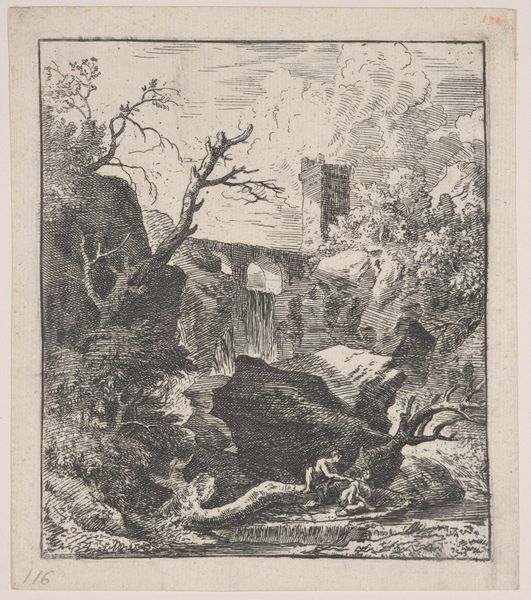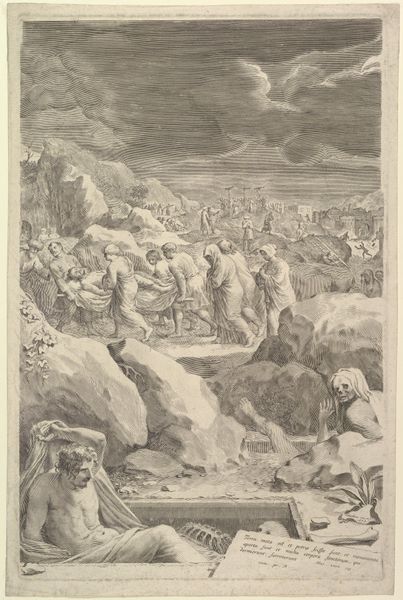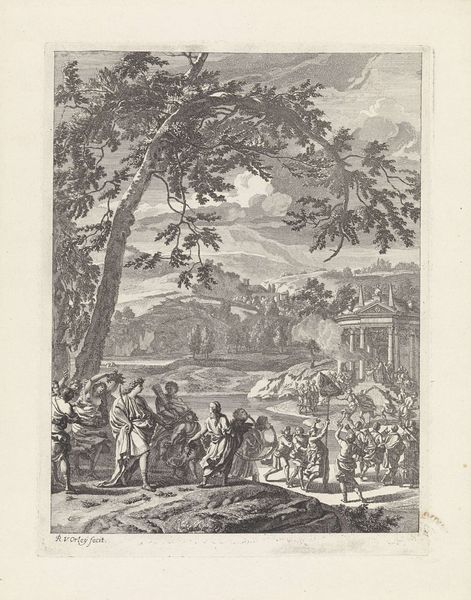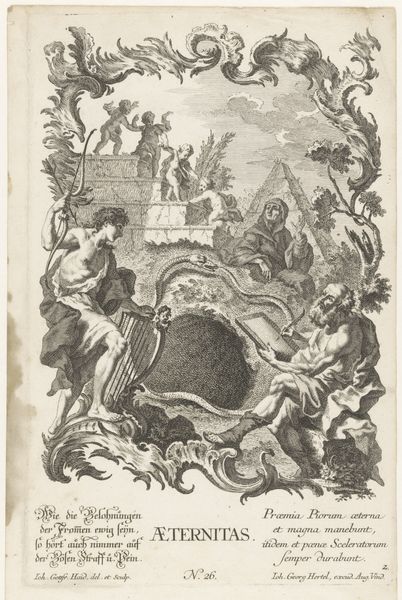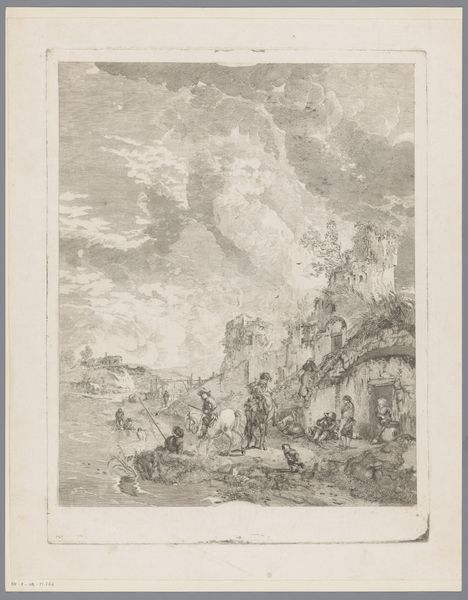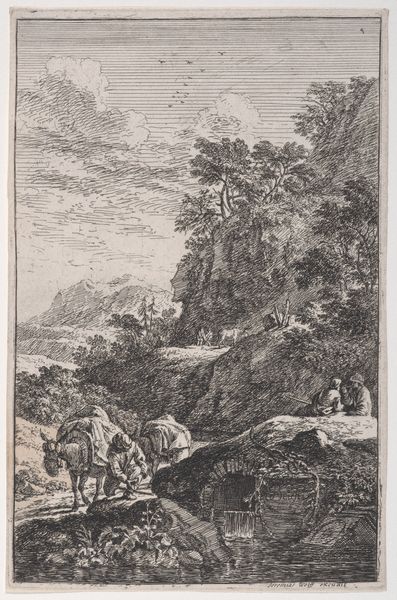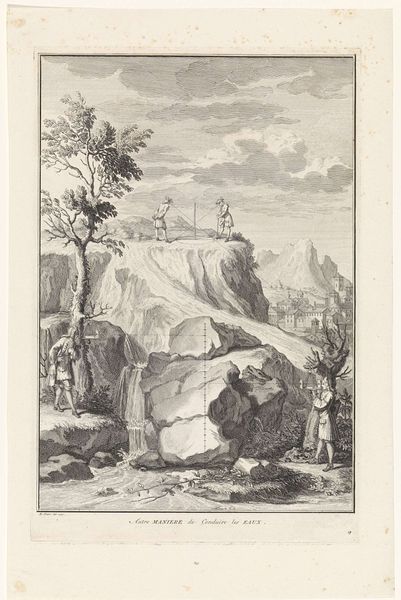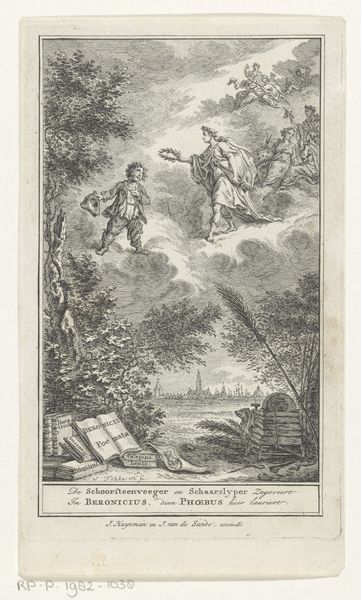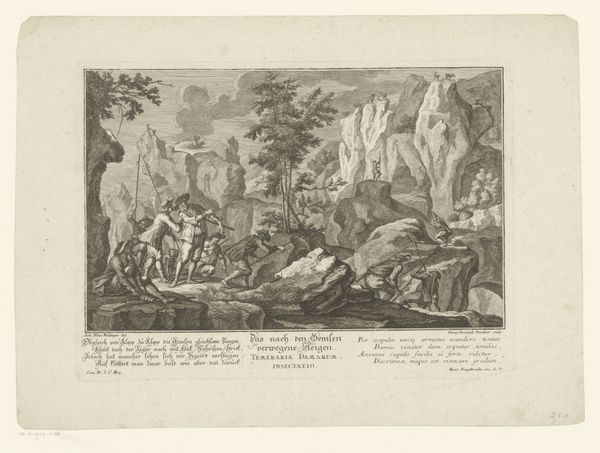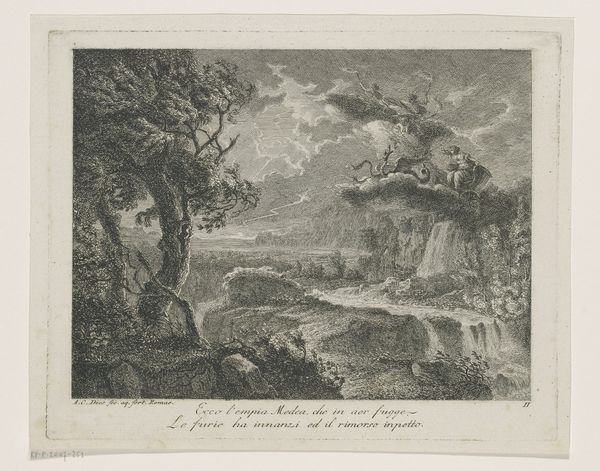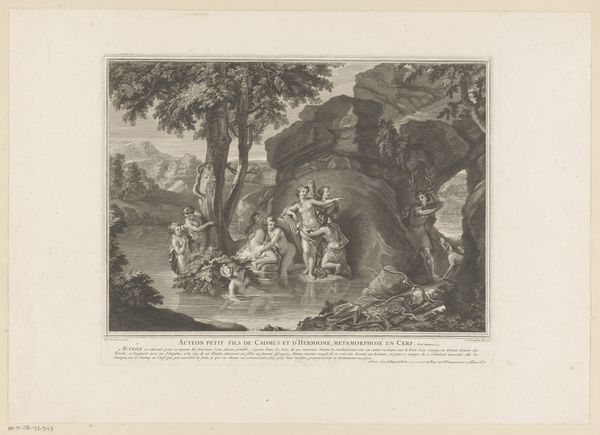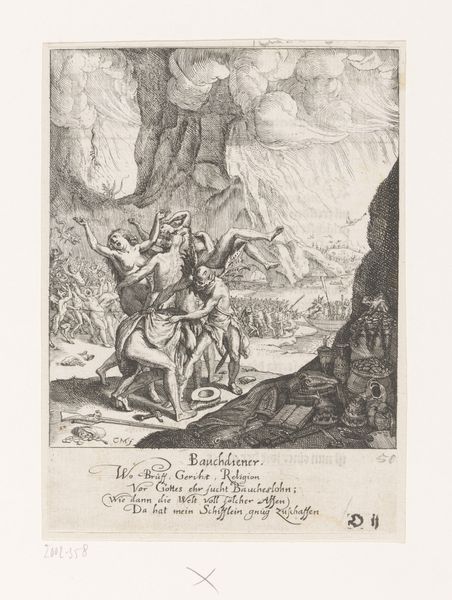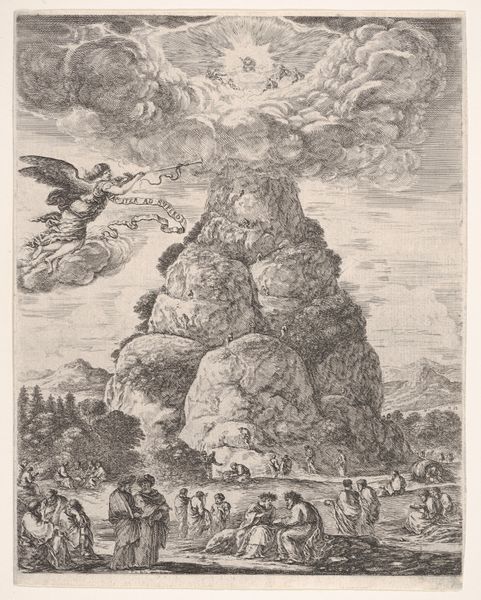
Dimensions: height 115 mm, width 66 mm
Copyright: Rijks Museum: Open Domain
Editor: Here we have "Tweekamp tussen Numa en Leo", or "Duel Between Numa and Leo," an engraving by Jean Dambrun, created in 1786. It's so intricate, with this landscape setting framing the dramatic conflict. What catches your eye most about it? Curator: It’s the material reality of the printmaking process itself that immediately draws my attention. Think of the engraver, Dambrun, and the physical labor involved in creating this image. The fine lines, the cross-hatching – all etched with a burin into a metal plate. How does that intensive production method shape the content itself? Editor: I guess the laboriousness impacts the level of detail, forcing the artist to make careful choices about what to include. The detail almost elevates a scene of battle to something heroic or monumental, maybe? Curator: Precisely. Consider also the social context. Prints like this were relatively accessible. They circulated widely, disseminating ideas. What message is this image, reproduced and distributed, intended to convey about power, conflict, and perhaps even national identity? Does the landscape reinforce ideas about territory and possession? Editor: That makes me consider how the meaning changes with the ease of contemporary print reproduction versus back then! How do you think the material reality impacted who had access to it, and how they used it? Curator: Originally, prints offered broader accessibility compared to unique paintings, shaping public opinion and historical understanding. However, their inherent value and cultural appreciation evolved with their scarcity over time, transitioning them into revered historical artifacts that have become objects of conservation and research within institutional collections. That contrast affects our relationship to the imagery and the history itself. Editor: Wow, I never really thought about the journey of prints in this manner. I'm rethinking how this piece might have been perceived at the time of its making. Curator: It’s about grounding our interpretations in the tangible: how art is made, by whom, and for whom, so, excellent!
Comments
No comments
Be the first to comment and join the conversation on the ultimate creative platform.
